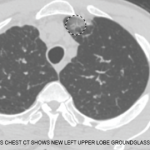Dr. Jennette said new approaches to treatment have been informed by decades of work to better understand AAV’s pathogenesis. “With our understanding of pathogenic mechanisms, we may think of targets for therapy we would not have thought of otherwise.”
GPA Remission Research
In another session focused mainly on maintaining remission in granulomatosis with polyangiitis (GPA), Christian Pagnoux, MD, associate professor of rheumatology at Mount Sinai Hospital in Toronto, said the data are not always clear cut, putting the onus on clinicians to decide what’s best for their patients.
“There are lots of unanswered and lingering questions, and a lot of controversy as well,” he said. “Different groups or persons may have different opinions.”
Conventional immunosuppressive treatments for GPA remission maintenance over the past 20 years have included azathioprine (AZA), methotrexate (MTX) and mycophonelate mofetil (MMF). But even though short-term relapse rates remain low, relapse-free survival occurs for only about 30% of patients on these treatments at about three years, Dr. Pagnoux said.
“That’s why these are far from being the ideal treatment, at least when they are given for 12 months,” he said.2
In a small German study, leflunomide was found to work better than methotrexate, making it a potential option, at least for patients who can’t tolerate methotrexate or azathioprine.3
There have been confusing findings on maintenance therapy for patients who received rituximab induction. A study out of Cleveland Clinic found that those treated with AZA, MTX or MMF had a relapse rate of 35% at 18 months compared with 61% for those not given maintenance treatment.4 But a study out of Cambridge showed maintenance didn’t have this effect: “It was as if this conventional treatment had become futile or too weak to achieve anything and to maintain remission further when given shortly after rituximab,” Dr. Pagnoux said. These were both retrospective studies.
In the MAINRITSAN trial, systematic rituximab infusions produced good results compared to azathioprine in patients who achieved remission, and researchers await more results from the RITAZAREM trial.5
Questions also remain over how long patients should remain on maintenance therapy, Dr. Pagnoux said. In the REMAIN study, patients on azathioprine and low-dose prednisone for four years had a lower relapse rate than those whose maintenance treatment was stopped after two years.6 But follow-up data from six European studies found that although stopping maintenance at 12 months was associated with a higher relapse rate, there was no benefit to continuing past 18 months.7


